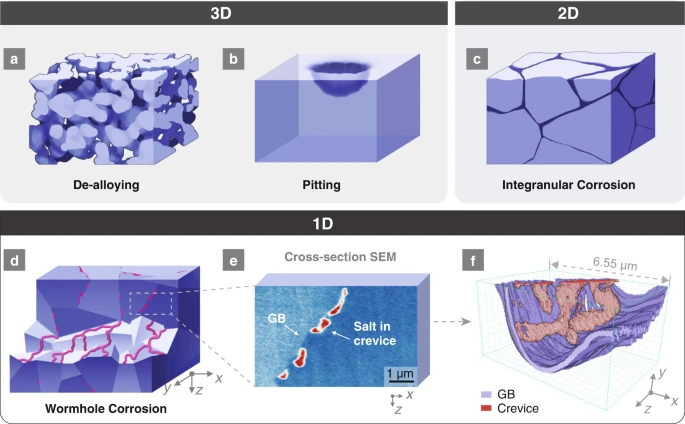Science Daily February 23, 2023
Often, the progression of localized corrosion is accompanied by the evolution of porosity in materials previously reported to be either three-dimensional or two-dimensional. Using new tools and analysis techniques, a team of researchers in the US (Lawrence Berkeley National Laboratory, Pennsylvania State University, MIT, Pacific Northwest National Laboratory, University of Virginia) realized that a more localized form of corrosion, which they call 1D wormhole corrosion, has previously been miscategorized in some situations. Using electron tomography, they showed multiple examples of 1D and percolating morphology. To understand the origin of this mechanism in a Ni-Cr alloy corroded by molten salt, they combined energy-filtered four-dimensional scanning transmission electron microscopy and ab initio density functional theory calculations to develop a vacancy mapping method with nanometer-resolution, identifying a high vacancy concentration in the diffusion-induced grain boundary migration zone, up to 100 times the equilibrium value at the melting point. Deciphering the origins of 1D corrosion is an important step towards designing structural materials with enhanced corrosion resistance… read more. Open Access TECHNICAL ARTICLE

Differences between 3D, 2D, and 1D corrosion. Credit: Nature Communications volume 14, Article number: 988 (2023)